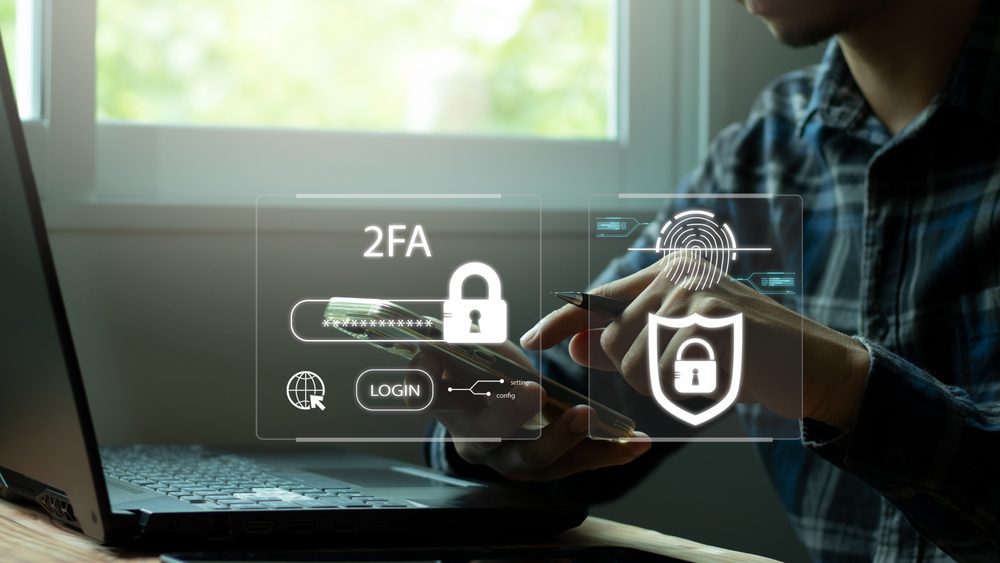In an age where organisations rely on technology to store, process and transmit sensitive data, device security is no longer just ideal; it is a necessity.
Without robust device security measures in place, your business assets are an increased target for cyber attacks — potentially compromising the confidentiality, integrity and availability of your customer data and putting your company's reputation, finances, operations and legal compliance at risk.
Want to protect your systems and data from unauthorised access and its devastating consequences? It is time to strengthen your online armour with two-factor authentication (2FA)…
What is two-factor authentication?
Do you use your pet's name, your place of birth or just '123456' for your password? Are you guilty of using the same password for all your accounts?
These days, hackers can decrypt the above examples within seconds with automated tools — and it is more important than ever to create strong passwords for your business accounts and software.
Whether you are hacked by a disgruntled employee or an external malicious actor, your password should be extremely difficult to crack to minimise the risk of data breaches and other threats. And that is where two-factor authentication comes in…
2FA is an added layer of security that more and more businesses are turning to for protection.
It is a security enhancement that asks you to present two pieces of identity evidence when logging in to your business account. This typically includes something you know (such as a traditional password or PIN that you created when setting up your account), something you have (like a smartphone or password key that is used to generate one-time codes) or something you are (physical characteristics like facial recognition or fingerprint scans).
Introducing two-factor authentication is an affordable and user-friendly way to reduce the probability of a security breach and ward off identity theft and phishing attacks — all whilst keeping business disruption to a minimum.
What other benefits does this added security offer?
When combined with a password, two-factor authentication gives your company increased protection from cyber breaches and a heads-up on any hacking attempts.
But there are more benefits to 2FA than meet the eye…
Increase your team's flexibility
With working from home still so popular amongst businesses, there has been an inevitable rise in bring-your-own-device (BYOD) policies — allowing staff to access corporate accounts through their personal devices.
Whilst this policy presents the opportunity for higher productivity from home, it also throws up some serious cyber security risks. Employee-owned endpoints usually contain employees' personal information (in addition to corporate data), which is subject to breach. Plus, it is much harder for organisations to mandate the safety of certain configurations or applications used on these devices.
Luckily, implementing two-factor authentication for personal devices gives your team increased mobility and security. With 2FA measures, you have peace of mind that your team can securely access their corporate accounts from anywhere — without exposing your corporate network or any sensitive data.
Reduce pressure on your IT department
IT helpdesk providers have a lot to juggle — so why not take time-consuming password resets off their hands?
Two-factor authentication allows staff to reset their own passwords. Not only will this boost your team's productivity, but it will also free up your IT helpdesk to focus on the more complex aspects of IT maintenance.
Improve and maintain customer trust
When cyber breaches threaten loss of customer trust and permanent damage to your organisation's creditability, is the lack of two-factor authentication worth the risk?
Customers want their data to be safe with you — and having two-factor authentication lets them know their security is your priority.
How should your business implement 2FA?
Evidently, there are many upsides to introducing 2FA into your organisation. But to fully reap the benefits of this device security, you must implement it successfully — and here is how…
Prioritise compliance
2FA is a great way to achieve GDPR compliance — but certain standards mean that some two-factor authentication solutions are more secure than others.
To avoid getting into hot water with legal compliance, choose a two-factor verification option that relies on standards-based cryptographic algorithms and authentication protocols.
Keep your access points in mind
Does your business span beyond the walls of your office space? If so, finding a provider that can accommodate the various locations your users authenticate their devices from is crucial.
Test the security solution
Before the two-factor authentication system can go live within your business, it must be tested to ensure it is secure and accurate.
This testing should include stress tests and vulnerability scans to ensure the solution works as intended.
Monitor your 2FA
Once the two-factor authentication solution has been tested, it must be tracked, supported and maintained to ensure your business data is as safe as possible. Regularly update the security system, check it for proper usage and promptly fix any issues.
Communicate with your team
Device security is the responsibility of your whole organisation. So, ensure your staff understands the importance of 2FA — and their role in protecting the organisation's digital assets.
Are you ready to implement two-factor authentication and bolster your organisation's device security practices? Contact our team of cyber specialists at 01252 843014 or email info@burningtree.co.uk to discuss our security improvement services.




